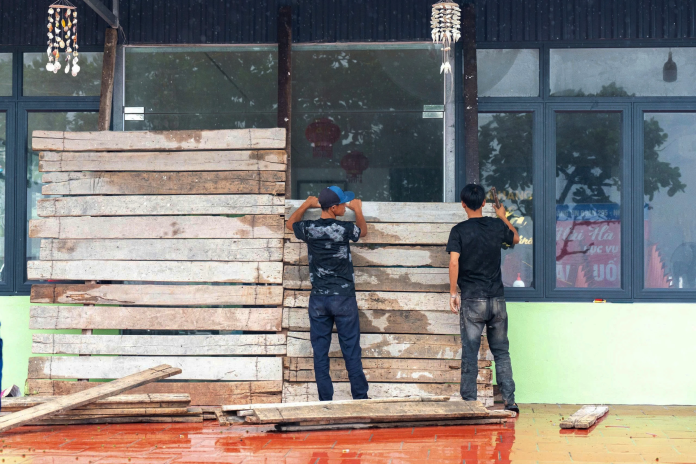Northern Vietnam faced significant disruption as Tropical Storm Wipha swept ashore early Tuesday, according to AP News.
The storm unleashed powerful winds and intense rainfall across northern and central regions, prompting widespread precautions. While classified as a typhoon over open waters on Monday, Wipha weakened overnight and was reclassified as a tropical storm prior to making landfall near 10 a.m. local time.
According to Vietnamese meteorological authorities, the storm arrived with sustained winds reaching 64–102 kilometres per hour (40–63 mph) and gusts peaking at a forceful 138 kph (86 mph). Following landfall, Wipha tracked southwestwards, moving further inland.
The storm’s approach led to the cancellation of numerous flights across northern Vietnam. Precautionary measures saw airports in the port city of Hai Phong and Quang Ninh province temporarily close their operations.
The streets of the capital, Hanoi, were notably deserted as the storm intensified. Authorities advised residents to remain indoors and evacuate buildings deemed unstable or situated in areas highly susceptible to flooding. Most businesses heeded the warnings and remained closed.
The storm’s fury was felt keenly in Hung Yen Province, east of Hanoi, where power outages occurred. State media reported residents rushing to local petrol stations to secure fuel for generators.
Vietnam’s disaster management agencies issued stern warnings regarding potential flooding as the heavy rainfall associated with Wipha moves inland. The agricultural sector faces particular risk, with state media indicating nearly 150,000 hectares (370,000 acres) of aquaculture farms and over 20,000 floating fish cages threatened by flooding and the storm’s strong winds.
Broader weather patterns and climate influence
This event occurs against a backdrop of severe weather elsewhere in the region. In the Philippines, recovery efforts continue after devastating floods, landslides, and tidal surges over the weekend. More than 80,000 individuals are still residing in emergency shelters.
The capital and ten provinces experienced widespread flooding from intense monsoon rains, forcing the closure of most government offices and schools on Tuesday.
Military personnel assisted in evacuating residents from villages inundated by knee- to waist-deep water, while the coast guard utilised buses and boats to aid stranded commuters. At least three fatalities have been reported.
The intensification of storms like Wipha is increasingly linked to global climate change. Benjamin P. Horton, Dean of the School of Energy and Environment at City University of Hong Kong, explained the connection:
Rising sea surface temperatures, fueled by climate change, can intensify these storms.
This scientific perspective underscores the growing concern over the potential for future storms to exhibit greater destructive power due to ongoing planetary warming.
